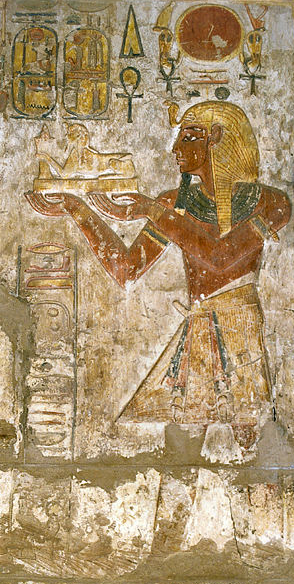3000 -700 BCE
Really ancient history

The invention of farming changed human life forever. People now living a settled life that could support many more people that hunting and gathering. As the population exploded, villages grew into towns and cities, and different classes appeared. The earliest civilizations developed in Egypt and Mesopotamia, with kings, organized religion, and writing. A great advance was made when people learned how to use metals, for tools, weapons, and jewellery. Competition over land and resources also led to the first wars.
3000-2500 BCE
During the Egyption Old Kingdom, a series of pharaohs built the largest stone tombs in history. Egypt pyramid tomb acted as an eternal home for the dead king, and a place where he was thought to change into an immortal god. The tallest of them. The Great Pyramid, stood 147m (481 ft) high.
Kingdom of the Nile
The civilization of Ancient Egypt grew up beside the desert along the banks of the River Nile. Each year the river flooded, depositing fertile soil along the banks where people were able to farm. The first period of Ancient Egyption civilization, known as the old kingdom, was a time of peace and prosperity.
Step pyramid
Pharaoh Djoser (ruled 2670-2651 BCE) built the first pyramid, with six stepped levels. This was the world's first large building made of stone.
Great Pyramid
The largest pyramid of all was built by Pharaoh Khufu (ruled 2589-2566 BCE). The Great Pyramid of Giza is the only pyramid to have the king's burial chamber high up in the tomb.
3000 BCE
First state
In Egypt pharaohs created the world's first state. The king was seen as divine, a living representative of the sky god, Horus. Pharaohs were the first rulers to wear crowns.
Stonehenge
In Britain, farming people began to build Stonehenge, a ceremonial center, aligned with the midwinter sunset. It began as a circular ditch and bank. The first stones were erected in 2600 BCE, followed by larger uprights with horizontal stones in 2600 BCE. How stonehenge was used remains a mystery.
3000 BCE
Chinese towns
Along the Yellow River, people built the first large walled towns in China. The Longshan people, named after the town where the first excavations took the place, made beautiful pottery and silk textiles from moth cocoons.
2800 BCE
Caral
The earliest American civilization developed in Peru. The people of the Norte Chico civilization built the first large towns in the Americans. One of the biggest was Carol (right). when has huge ceremonial platform mounds.
Life after death
The Ancient Egyption preserved the bodies of the dead for a life they believed existed after death. Bodies were mummified - embalmed, wrapped, and placed in cases covered in religion symbols for protection.
...
The Ancient Egyptian civilization continued with few changes, for almost 3,000 years.
4000 - 2000 BCE MESOPOTAMIA
Mesopotamia means "between the rivers"and lay in roughly the area of modern Iraq. The region of Summer is shown in pink. The dotted line on the map above shows the coastline at this time, which has retreated over the centuries.
...
The first great civilization emerged in Mesopotamia, on the fertile flood plains of the Tigris and Euphrates rivers. The earliest dynasties were in the region of Sumer. The Mesopotamians are believed the wheel, the plough, and writing.
Men of war
Unlike Egypt, mesopotamia was not a single state, but made up of city-states, each ruled by a king on behalf of a god. The cities competed for control, and are thought to have recruited the first armies in history.
Royal tombs
From 2600 BCE, the rulers of the city of Ur were buried in tombs filled with treasures and everyday items for the next life, such as this gaming board.